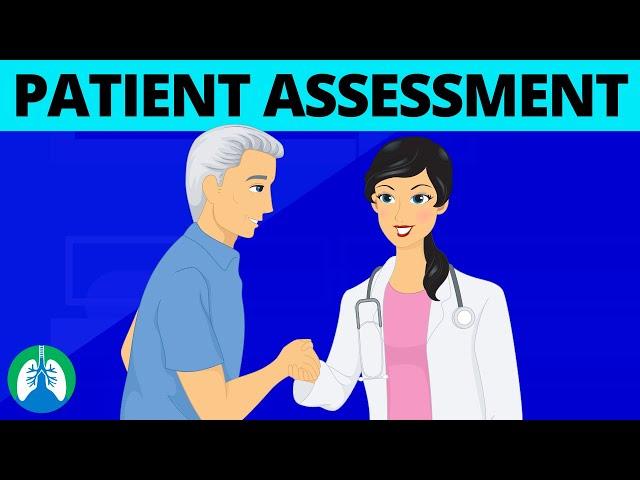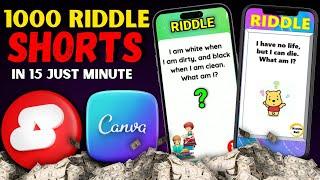
Patient Assessment (How to Perform as a Respiratory Therapist) | Respiratory Therapy Zone
How to Perform a Patient Assessment as a Respiratory Therapist? Watch this video to learn the step-by-step process.
💥Patient Assessment [Full Guide] ➜ ➜ ➜ http://bit.ly/2tRpWaf
➡️ Patient Assessment
First things first, you must be able to interpret, recognize, and perform the right patient assessment procedures that will lead to the appropriate care for the patient. You will also need to be able to make therapeutic recommendations such as administering therapy in an effective manner. Also, you must evaluate the patient’s progress, as well as recognize any adverse reactions that the patient may have.
➡️ 1. Check for the doctor’s order
This applies to pretty much anything you will do as a student or Respiratory Therapist. You should always verify the doctor’s order before you proceed. Before entering the room, you should be able to accurately locate the patient’s chart and obtain and interpret all the information that is relative to the case at hand.
➡️ 2. Enter the patient's room
Obviously, you want to knock before going in. Wash your hands, then proceed to introduce yourself to the patient. Go ahead and make it a habit now. Wash your hands immediately when entering a patient's room, and then wash them again before leaving the patient's room.
➡️ 3. Gather any subjective information from the patient
This is the information that the patient tells you through communication. This information is not measurable. For example, if the patient says, “I’m having trouble breathing.” This is subjective information.
➡️ 4. Now you can gather any objective information from the patient
Objective information, on the other hand, is measurable. It includes the vital signs that you will measure during your assessment. Again, “Measure” is the key word here.
➡️ Here are the vital signs that you should obtain on every patient:
- Heart rate
- Oxygen saturation
- Respirations
- Breath sounds
Each of these vital signs is classified as objective information and, of course, they are a very important part of your patient assessment.
➡️ 5. Use the information that you have obtained from the patient to interpret and develop an analysis of the patient
Now it’s time to put what you learned to the test. How were the patient’s vital signs? Was their heart rate in the normal range? How about their oxygen saturation? Were they breathing too fast or too slow? Did you hear any wheezing in their breath sounds? This is all stuff you should take into consideration to form your analysis of the patient.
➡️ 6. Use the information that you gathered to develop a plan of care
Now it’s time to make a plan for the patient. Do you recall all the questions that we just asked in step 5? Now is the time to answer those questions in order to help make a treatment plan for the patient. Was their oxygen level low? If so, now would be the time to provide the patient with a higher FiO2. Was the patient wheezing? If so, now would be a good time to administer a short-acting bronchodilator via small-volume nebulizer. In this step, you should use everything you gathered in your assessment to help develop a proper action plan to treat the patient in the most effective way possible.
💥Patient Assessment [Full Guide] ➜ ➜ ➜ http://bit.ly/2tRpWaf
—————
📗 BEST STUDY GUIDES FOR YOU
▪ TMC Test Bank 👉 http://bit.ly/2IGeqSu
▪ Hacking the TMC Exam 👉 http://bit.ly/2XBc8do
▪ TMC Exam Bundle (Save $) 👉 https://bit.ly/34pqEsV
▪ Daily TMC Practice Questions 👉 http://bit.ly/2NnXh3C
💙MORE FROM RTZ
▪ Free TMC Practice Exam 👉 http://bit.ly/2XlwASL
▪ Free RRT Cheat Sheet 👉 http://bit.ly/2IbmOKB
▪ Resources for RT's 👉 http://bit.ly/2WVV5qo
▪ Testimonials 👉 http://bit.ly/2x7b5Gl
🌐FOLLOW US
▪ Instagram 👉 http://bit.ly/2FhF0jV
▪ Twitter 👉 http://bit.ly/2ZsS6T1
▪ Facebook 👉 http://bit.ly/2MSEejt
▪ Pinterest 👉 http://bit.ly/2ZwVLPw
🚑MEDICAL DISCLAIMER
Medicine and Respiratory Therapy are continuously changing practices. The information in this video is for educational and entertainment purposes only. For medical advice, please consult with a physician or qualified medical professional.
💡AFFILIATE DISCLAIMER
This description contains affiliate links. If you decide to purchase a product through one of them, we receive a small commission at no cost to you.
—————
⏰TIMESTAMPS
0:00 - Intro
0:57 - Patient Assessment
1:41 - Check for the Doctor’s Order
2:08 - Enter the Patient's Room
2:32 - Gather any Subjective Information from the Patient
2:59 - Gather any objective information from the patient
3:40 - Use the information that you have obtained from the patient to interpret and develop an analysis of the patient.
4:18 - Use the information that you gathered to develop a plan of care
—————
🖼CREDIT FOR MUSIC AND GRAPHICS:
▪ Music provided by https://audiojungle.net/
▪ Graphics: www.canva.com
▪ Graphics: www.freevector.com
▪ Graphics: www.vecteezy.com
▪ Graphics: www.pngtree.com
#RespiratoryTherapy #RespiratoryTherapist #PatientAssessment
💥Patient Assessment [Full Guide] ➜ ➜ ➜ http://bit.ly/2tRpWaf
➡️ Patient Assessment
First things first, you must be able to interpret, recognize, and perform the right patient assessment procedures that will lead to the appropriate care for the patient. You will also need to be able to make therapeutic recommendations such as administering therapy in an effective manner. Also, you must evaluate the patient’s progress, as well as recognize any adverse reactions that the patient may have.
➡️ 1. Check for the doctor’s order
This applies to pretty much anything you will do as a student or Respiratory Therapist. You should always verify the doctor’s order before you proceed. Before entering the room, you should be able to accurately locate the patient’s chart and obtain and interpret all the information that is relative to the case at hand.
➡️ 2. Enter the patient's room
Obviously, you want to knock before going in. Wash your hands, then proceed to introduce yourself to the patient. Go ahead and make it a habit now. Wash your hands immediately when entering a patient's room, and then wash them again before leaving the patient's room.
➡️ 3. Gather any subjective information from the patient
This is the information that the patient tells you through communication. This information is not measurable. For example, if the patient says, “I’m having trouble breathing.” This is subjective information.
➡️ 4. Now you can gather any objective information from the patient
Objective information, on the other hand, is measurable. It includes the vital signs that you will measure during your assessment. Again, “Measure” is the key word here.
➡️ Here are the vital signs that you should obtain on every patient:
- Heart rate
- Oxygen saturation
- Respirations
- Breath sounds
Each of these vital signs is classified as objective information and, of course, they are a very important part of your patient assessment.
➡️ 5. Use the information that you have obtained from the patient to interpret and develop an analysis of the patient
Now it’s time to put what you learned to the test. How were the patient’s vital signs? Was their heart rate in the normal range? How about their oxygen saturation? Were they breathing too fast or too slow? Did you hear any wheezing in their breath sounds? This is all stuff you should take into consideration to form your analysis of the patient.
➡️ 6. Use the information that you gathered to develop a plan of care
Now it’s time to make a plan for the patient. Do you recall all the questions that we just asked in step 5? Now is the time to answer those questions in order to help make a treatment plan for the patient. Was their oxygen level low? If so, now would be the time to provide the patient with a higher FiO2. Was the patient wheezing? If so, now would be a good time to administer a short-acting bronchodilator via small-volume nebulizer. In this step, you should use everything you gathered in your assessment to help develop a proper action plan to treat the patient in the most effective way possible.
💥Patient Assessment [Full Guide] ➜ ➜ ➜ http://bit.ly/2tRpWaf
—————
📗 BEST STUDY GUIDES FOR YOU
▪ TMC Test Bank 👉 http://bit.ly/2IGeqSu
▪ Hacking the TMC Exam 👉 http://bit.ly/2XBc8do
▪ TMC Exam Bundle (Save $) 👉 https://bit.ly/34pqEsV
▪ Daily TMC Practice Questions 👉 http://bit.ly/2NnXh3C
💙MORE FROM RTZ
▪ Free TMC Practice Exam 👉 http://bit.ly/2XlwASL
▪ Free RRT Cheat Sheet 👉 http://bit.ly/2IbmOKB
▪ Resources for RT's 👉 http://bit.ly/2WVV5qo
▪ Testimonials 👉 http://bit.ly/2x7b5Gl
🌐FOLLOW US
▪ Instagram 👉 http://bit.ly/2FhF0jV
▪ Twitter 👉 http://bit.ly/2ZsS6T1
▪ Facebook 👉 http://bit.ly/2MSEejt
▪ Pinterest 👉 http://bit.ly/2ZwVLPw
🚑MEDICAL DISCLAIMER
Medicine and Respiratory Therapy are continuously changing practices. The information in this video is for educational and entertainment purposes only. For medical advice, please consult with a physician or qualified medical professional.
💡AFFILIATE DISCLAIMER
This description contains affiliate links. If you decide to purchase a product through one of them, we receive a small commission at no cost to you.
—————
⏰TIMESTAMPS
0:00 - Intro
0:57 - Patient Assessment
1:41 - Check for the Doctor’s Order
2:08 - Enter the Patient's Room
2:32 - Gather any Subjective Information from the Patient
2:59 - Gather any objective information from the patient
3:40 - Use the information that you have obtained from the patient to interpret and develop an analysis of the patient.
4:18 - Use the information that you gathered to develop a plan of care
—————
🖼CREDIT FOR MUSIC AND GRAPHICS:
▪ Music provided by https://audiojungle.net/
▪ Graphics: www.canva.com
▪ Graphics: www.freevector.com
▪ Graphics: www.vecteezy.com
▪ Graphics: www.pngtree.com
#RespiratoryTherapy #RespiratoryTherapist #PatientAssessment
Тэги:
#respiratory_therapy_zone #respiratory_therapy_school #respiratory_therapy #respiratory_therapist #respiratory_study_guide #tmc_exam #tmc_practice_questions #patient_assessment #paramedic #medical #emt_skills #trauma_assessment #emergency_medical_services #emt #patient #assessment #practical_skills #respiratory_care #respiratory_care_practitioner #rrt #med_school #nursing_school #how_to_perform_a_patient_assessment #nbrc #nbrc_hospital #seeing_a_patient #treating_a_patient #rt_examКомментарии:
Patient Assessment (How to Perform as a Respiratory Therapist) | Respiratory Therapy Zone
Respiratory Therapy Zone
[FREE] Punchmade Dev x BabyTron Type Beat - “Tax Fraud”
prod. euphoria beatz
When Paintless Dent Removal Goes Wrong! PDR Fail
Learn PDR Online
CHESTER vs LEON | Batalla Legendaria
KAMIKAZE





![[FREE] Punchmade Dev x BabyTron Type Beat - “Tax Fraud” [FREE] Punchmade Dev x BabyTron Type Beat - “Tax Fraud”](https://invideo.cc/img/upload/Y1lBd1BJd2YzMS0.jpg)




















